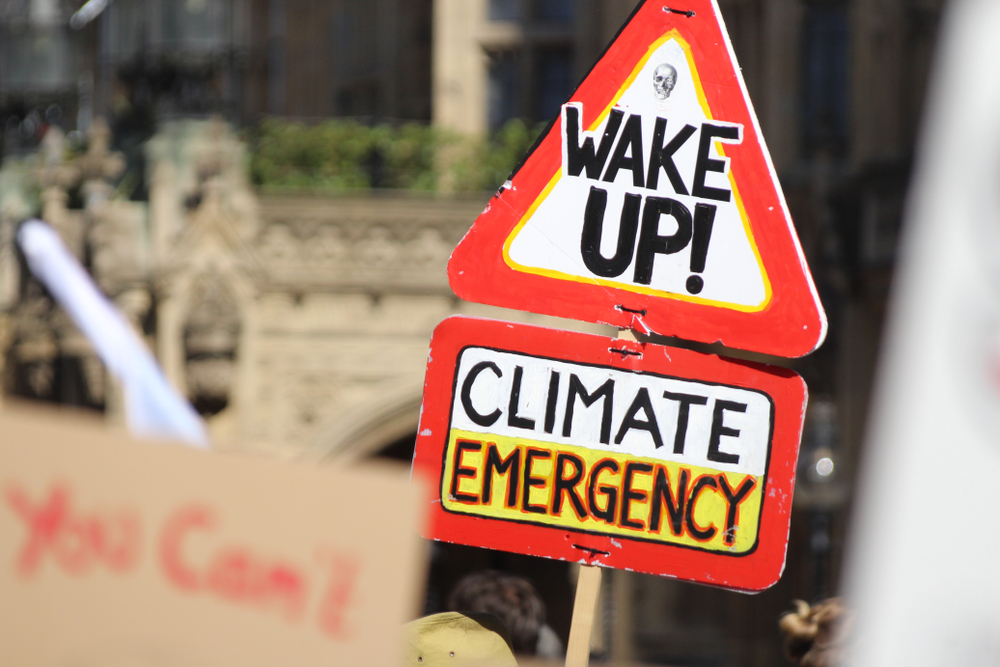Articles Menu

15 Nov 2025
At the 30th World Climate Conference, COP30, held in Belém from 10 to 21 November 2025, powerful nations and representatives of large corporations presented their positions on how to respond to the climate crisis. Escalating geopolitical tensions formed the backdrop and complicate the process of reaching agreement. This ‘climate conference’ – like its predecessors – has nothing to do with a transformation away from fossil fuels.
The US government under Trump has withdrawn from the 2015 Paris Climate Agreement. Recently, the US president described ‘climate change’ as a “hoax”. New ‘climate targets’ are not on the agenda. By February of this year, most countries had not fulfilled their obligation to set climate targets to be achieved by 2035. Moreover the national climate targets submitted in the previous five-year period were all insufficient. If they had been met, they would have pushed global warming well above two degrees above the pre-industrial global average. The European Union only recently agreed on its new targets after lengthy haggling and is scaling back its previously formulated targets. It wants to reduce emissions by 66.25 to 72.5 per cent by 2035 compared to 1990 levels. In addition, the EU also wants to count investments in emission reductions outside the EU towards its own 2040 emission target. It is postponing the start of the new emissions trading scheme for transport and buildings until 2028. The host country, Brazil, is no better. With its national oil company, Petrobras, it is vigorously pushing ahead with the expansion of oil production.
Adapting to barbarism
The conference in Belém will focus on strategies for adapting to global warming and on indicators for measuring the success of these adaptations. Another key topic is ‘climate finance’. At COP29 in Baku last year, the early industrialised countries agreed to support developing countries with at least 300 billion US dollars annually for climate protection and adaptation. However, there is still disagreement about where the money will come from, where it will go and under what conditions. A key project is the expansion of carbon markets. This pleases the players on the financial markets.
The conference spectacle seems rather cynical in view of the massive changes to the Earth’s climate system caused by the burning of coal, oil and gas. The recently published Lancet Countdown Report reports that millions of people lose their lives every year due to heat, air pollution, the spread of disease and worsening food insecurity. The number of heat-related deaths has risen by 63 per cent since the 1990s, reaching an average of 546,000 deaths per year between 2012 and 2021. The year 2024 was the hottest since records began, with the most vulnerable people (under one year old and over 65) exposed to an average of more than 300 per cent additional heatwave days compared to the annual average between 1986 and 2005. Extreme precipitation events, including flash floods and landslides, as well as droughts, increased over 60 per cent of the Earth’s land area. These climate extremes affect crop yields, disrupt supply chains and threaten food security. Added to this is the increased risk of transmission of deadly infectious diseases and air pollution caused by fossil fuels. In short, the rule of capital is forcing humanity into barbarism.

Emissions continue to rise
Despite these alarming findings, there is no sign of a reversal in the trend of global greenhouse gas emissions. According to the Emission Gap Report published in early November, total greenhouse gas emissions (i.e. CO2, methane, nitrous oxide, fluorinated gases and land use change) rose by 2.3 per cent worldwide in 2024 to 53.7 gigatonnes of CO2 equivalents (up 1.6 per cent in the previous year). This increase is roughly equivalent to the annual increase in emissions in the 2010s, but is four times higher than in the 2000s. According to the Global Carbon Project, CO2 emissions alone, including land use changes, will rise by 1.1 per cent this year to a record high of 42.2 gigatonnes of CO2. In the EU and the US, CO2 emissions are actually increasing again, contrary to the long-term trend. The massive growth seen in China and India to date is slowing down.
The fossil fuel counter-offensive that I analysed over two years ago has prevailed. The illusions of green capitalism have now vanished. COP28 in Dubai two years ago annointed the fossil fuel backlash (see ak 699). The development shows that there is no climate-relevant energy transition; rather, renewable energies are being added to the fossil fuel base of the capitalist economy.
According to Energy Outlook 2025, global energy demand rose by an average of 1.3 per cent per year from 2010 to 2023, but by more than two per cent in 2024. Energy intensity, the measure of energy consumption in relation to economic output, fell by an average of around two per cent per year between 2010 and 2019. In 2024, it fell by only 1.1 per cent. Measures to increase energy efficiency are running out of steam. However, global electricity demand increased by 4.3 per cent in 2024, far more than in previous years. The global economy thus became more electricity-intensive. Yet fossil fuels continued to account for 80 per cent of primary energy consumption. Even in 2024, investment in fossil fuels was higher than investment in renewable energies.
The rapid increase in the use of artificial intelligence and the construction of huge data centres are partly responsible for the huge increase in electricity consumption. They already account for 1.5 per cent of global electricity consumption. In Europe, the figure is three per cent, and in Ireland as high as 20 per cent. It should be noted that data centres require a constant supply of electricity. This argues against the unpredictable supply patterns of renewables as long as there is no comprehensive grid and storage infrastructure in place.
Oil consumption will rise
For the first time since 2019, the International Energy Agency’s (IEA) World Energy Outlook 2025 once again includes a scenario that extrapolates current developments and policies and models energy consumption up to 2050 on this basis. In doing so, it departs from the sometimes optimistic portrayals of an energy transition in recent years. This ‘Current Policies Scenario’ (CPS) depicts development trends much more realistically than the ‘Stated Policies Scenario’ (with an oil peak around 2030) or the normative climate neutrality scenario by 2050, which is completely illusory under capitalist conditions. Similar scenarios to the CPS one from oil companies and OPEC have unfortunately proven to be quite realistic in the past.
Global energy consumption in the CPS will increase by about 1.3 per cent per year over the next ten years, similar to the average over the last ten years. Demand for oil will rise to 113 million barrels per day by 2050, mainly due to increased use in emerging and developing countries for road transport, petrochemical feedstocks and aviation. Global demand for natural gas will rise to 5,600 billion cubic metres by 2050. The United States will remain the world’s largest oil and gas producer until 2050. However, OPEC+ oil production in 2050 will be 15 per cent higher than ever before in history.
Electricity demand is rising in all countries and regions. Solar photovoltaics (PV) and wind energy are cost-effective in many regions, but their introduction faces integration challenges that are slowing further growth: annual capacity growth for solar PV will average 540 gigawatts until 2035, roughly matching the growth seen in 2024.
Coal will remain the largest single source of global electricity generation over the next decade. The People’s Republic of China alone, now admired by uncritical contemporaries as the last hope of an energy transition after the faded illusions of green modernisation in Europe, is currently building more coal-fired power plants than it has in ten years. Even in the emerging imperialist power of China, energy security is more important than ecological restructuring. The construction of new nuclear power plants will accelerate worldwide in the 2030s. This scenario will result in a warming of around three degrees by the end of the century.

Strategic errors of the left
However, the persistence of fossil capital is not only the result of the rise of national conservative and fascist forces. Rather, the capitalist mode of production is completely interwoven with fossil fuels. Without the advantages of fossil fuels – easy storage, transportability, high energy density and high energy yield – the capitalist accumulation machinery would lose its central fuel. Investments in fossil fuels are many times more profitable than investments in renewables. Large financial companies have long since abandoned their grandiose announcements about their ‘green’ investment strategies. The so-called Net-Zero Banking Alliance of large financial institutions has dissolved. Green finance is languishing in obscurity. Furthermore, it is often forgotten that the infrastructure for renewable energies is largely built using fossil fuels. The CO2 emissions associated with this energy demand (around 195 GtCO2) already exceed the remaining budget (130 GtCO2) for meeting the so-called 1.5°C target. These structural economic and energy realities, as well as the requirements of a genuine energy transition, make it clear that there can be no non-fossil capitalism. The compulsion to accumulate capital cannot be satisfied on the basis of renewable energies. A capitalist energy transition is impossible.
Developments in recent years show that the discourse on the competition between a fossil-reactionary and a green-modernist hegemony project, which is particularly prevalent among critical and often Gramsci-oriented social scientists and on the left of the political spectrum, is a gigantic fallacy. The protagonists of this interpretation have examined the political discourses. This is interesting, but it does not help to understand the material and economic dynamics and constraints of the current phase of capitalism.
This discourse on the green-modernist hegemony project has contributed to two fatal strategic errors on the part of significant sections of the climate movement and the left. First, they underestimated the fossil fuel dependency of capitalism and thus lost sight of the power of fossil fuel capital – the main opponent. Second, they considered green modernisation to be probable and positioned themselves primarily as a left-wing socio-ecological corrective force to this modernisation project, which ultimately lacks material foundations. As long as there is not even the slightest success in undermining the power of fossil capital and the financial capital closely linked to it, any discourse on a ‘socio-ecological transformation’ remains hollow.
Climate conferences do not negotiate an energy transition. In fact they are about which powers and capital groups can portray and enforce their interests in the expansion of renewable energies on a fossil fuel basis – but under rapidly changing geopolitical and geo-economic conditions – as ‘climate-friendly’. Rather than critically monitoring one diplomatic initiative or another, it is more important to consider how the power of fossil fuel companies and their political representatives can truly be challenged.
To summarize our key points:
Christian is an Austrian Eco-activist and socialist. He is a professor at the University of Salzburg.